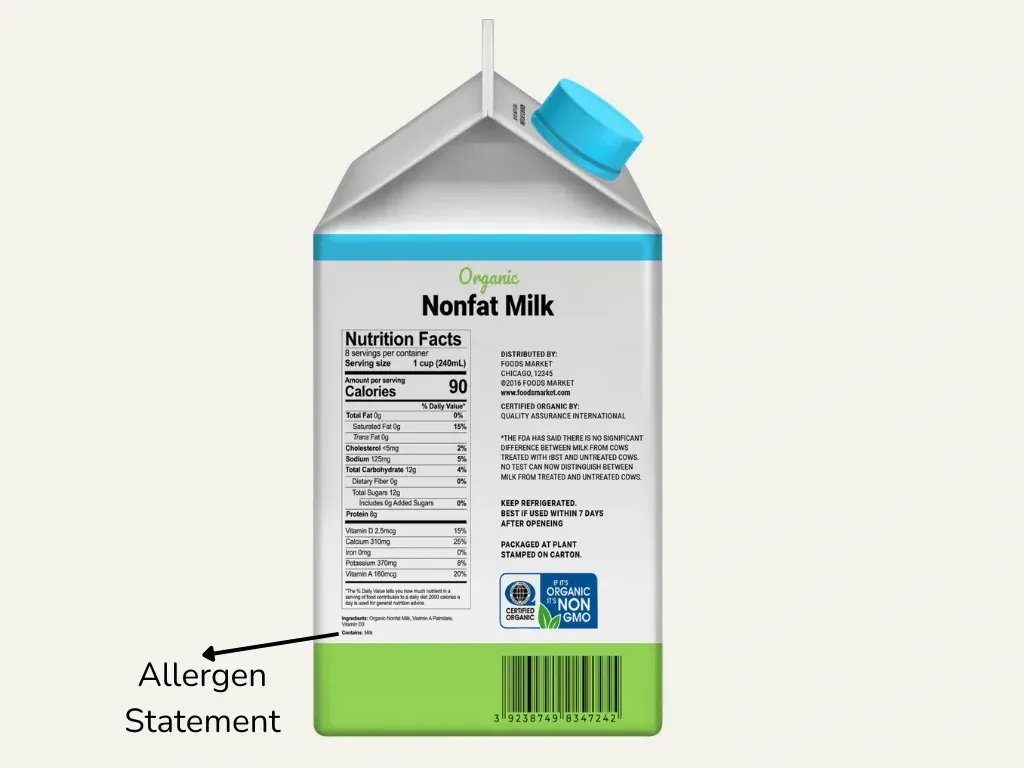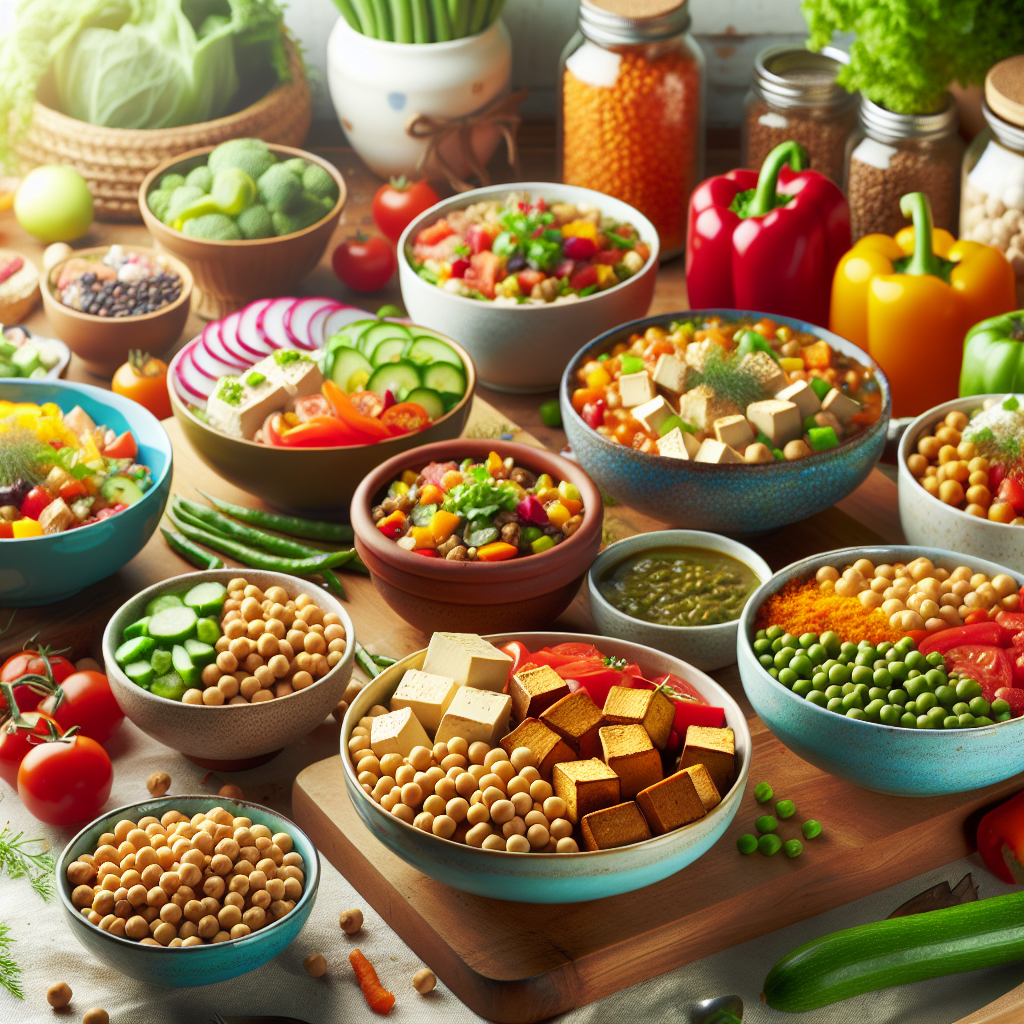Discover a new food truck in Bismarck offering gluten-free options for celiac and gluten-sensitive customers. Safe, tasty, and inclusive bites!
The Hidden Truth About Gluten-Free Diet: Benefits Your Doctor Never Mentioned
The Hidden Truth About Gluten-Free Diet: Benefits Your Doctor Never Mentioned The gluten free diet has skyrocketed in popularity. Americans spent more than $15.5 billion on gluten-free foods in 2016—double the amount from just five years earlier. While less than 1% of the U.S. population has celiac disease, roughly 20-30% of Americans have tried or currently follow a gluten-free lifestyle. This stark contrast between medical necessity and actual adoption makes us wonder what benefits drive so many people to eliminate gluten. Benefits of avoiding gluten go well beyond what doctors typically discuss with their patients. People who avoid gluten more than tripled between 2009 and 2014, which suggests many experience positive changes without a celiac diagnosis. Making this dietary choice can be challenging. Tools like the Food Scan Genius app help make it easier with its 35 customizable filters and AI technology. This piece will reveal the hidden benefits of a gluten free diet that your doctor probably never mentioned. Why gluten-free is more than a medical necessity The popularity of gluten-free diets has skyrocketed among people with no diagnosed conditions. The market for gluten-free products grew at an amazing rate of 28% each year between 2004 and 2011 [1]. Sales reached about $2.60 billion by 2012 [1] and experts predict this number will hit $6.60 billion by 2017 [1]. These numbers show that gluten-free living has spread way beyond people with celiac disease. The rise of gluten-free among healthy individuals Only 1% of people have celiac disease and 3-6% have non-celiac gluten sensitivity [2]. Yet about 25% of Americans ate gluten-free products in 2015 [2]. This gap suggests that roughly 20% of people pick gluten-free foods without any medical reason. NPD’s 2013 survey shows that 30% of Americans wanted to avoid gluten [1]. Another study found that 65% of American adults think gluten-free foods are healthier [1]. On top of that, a 2015 Nielsen survey of 30,000 adults worldwide showed that 21% of people rated gluten-free as a “very important” factor when buying food [3]. The typical gluten-free consumer might surprise you. A 2015 survey revealed that gluten-free food purchases were more common among: Women (23% versus 19% of men) Non-white respondents (31% versus 17% of white respondents) Those with a high school diploma or less (26% versus 17% with some college education) Households with income below $30,000 (24% versus 15% of those earning $75,000+) [3] Perceived vs real benefits of not eating gluten People often choose gluten-free diets based on beliefs rather than science. A 2015 survey revealed that “no reason” (35%) topped the list for picking gluten-free foods. “Healthier option” (26%) and “digestive health” (19%) followed [3]. Weight loss wasn’t a big factor, though most people believe it’s the main benefit [4]. People who eat gluten-free foods often think they’re healthier because they seem like “cleaner” alternatives to regular products [5]. Many say they feel less bloated and have better digestion after cutting out gluten [5]. Research shows that beliefs like “a gluten-reduced diet is healthier” and “gluten-free products are more nutritious than regular ones” often lead people to try gluten-free diets [6]. Notwithstanding that, scientists agree that removing gluten doesn’t improve health if you have no gluten sensitivity [2]. Gluten-free products often have more calories, fat, and sodium. They also contain less vitamin B-12, folate, niacin, vitamin D, iron, zinc, magnesium, calcium, dietary fiber, and protein than regular foods [2]. The Food Scan Genius app is a great way to get help if you’re learning about gluten-free options. It uses AI-powered conversation technology and offers over 35 customizable filters. This difference matters because many processed gluten-free foods pack extra sugar, fat, and additives to make up for missing gluten [5]. Surprising benefits of gluten-free living People without celiac disease have found substantial improvements in their overall wellbeing after switching to a gluten-free diet. These unexpected health benefits are way beyond what most healthcare providers typically discuss with patients. Better digestion even without celiac disease A gluten-free diet can dramatically improve your digestive function even without celiac disease. One of the most immediate effects is reduced bloating and gas – common symptoms that usually improve within weeks [7]. If you have non-celiac gluten sensitivity, removing gluten reduces inflammation in your digestive tract and allows the gut lining to recover [7]. Your bowel movements become more regular after eliminating gluten. People who used to deal with chronic constipation or diarrhea often notice their digestive rhythm returns to normal [7]. A balanced gluten-free diet rich in fiber from fruits, vegetables, and gluten-free whole grains supports healthy digestion [8]. The Food Scan Genius app makes finding truly healthy gluten-free options easier with its 35 customizable filters and AI-powered conversation technology. Unlike other food scanners, it helps you identify products that are both gluten-free and nutritionally balanced. Improved sleep and reduced inflammation So, removing gluten may substantially improve your sleep quality. Research shows that people with celiac disease are nearly twice as likely to struggle with insomnia [9], but eliminating gluten can help restore normal sleep patterns. Gluten and sleep are connected through inflammation. Gluten consumption triggers inflammatory responses in sensitive individuals that disrupt the gut microbiome [10]. This matters because your gut produces 95% of your body’s serotonin – a precursor to melatonin, the sleep hormone [11]. Plus, gluten-related inflammation affects how your body absorbs sleep-essential minerals: Calcium (affects melatonin production) Magnesium (supports relaxation) Potassium (regulates sleep cycles) [10] A 4-6 week gluten elimination diet might reveal whether gluten sensitivity affects your sleep [10]. Boosted mental clarity and mood Going gluten-free benefits extend to mental wellbeing. “Brain fog” – marked by difficulty concentrating, memory problems, and mental fatigue – commonly affects people with gluten sensitivity [12]. Clinical studies have found gluten-free diets substantially improve pooled depressive symptom scores in treated patients. After one year, there was no difference in mean scores between patients and healthy controls [13]. The inflammation from gluten consumption can affect any part of your body, including your brain, and may demonstrate as psychiatric or behavioral
Best Multivitamin for Kids, 2025: Mighties Launched New Chill Drink – Lelezard
Discover the best multivitamin for kids in 2025! Learn about Mighties’ new Chill Drink, featured in Lelezard, designed for kids’ health and wellness.
Woman Ignores Daughter-in-Law’s Food Intolerances. Then, Plays ‘Victim’ When She Starts Bringing Her Own Meals – AOL.com
Mother-in-law dismisses daughter-in-law’s food intolerances, then claims to be the victim when she brings her own meals. Read the full story.
The only way to know if you have coeliac disease or gluten intolerance – The Independent
Discover the only accurate way to determine if you have coeliac disease or gluten intolerance, according to expert advice from The Independent.
How to Spot Hidden Food Allergens: A Life-Saving Label Guide
How to Spot Hidden Food Allergens: A Life-Saving Label Guide Did you know that just eight common food allergens cause 90% of food allergies and serious allergic reactions in the U.S.? These everyday ingredients can trigger reactions within minutes – from mild hives to life-threatening anaphylaxis. Reading labels becomes a vital safety practice if you have food allergies. The FDA requires clear labeling of the “Big 9” major food allergens: milk, eggs, fish, crustacean shellfish, tree nuts, peanuts, wheat, soybeans, and sesame (added recently). Yet concerns remain. Scientists have identified more than 160 foods that can trigger allergic reactions in sensitive people. Many products contain hidden allergens that aren’t obvious on the packaging. The FDA’s data shows that undeclared allergens caused about one-third of reported serious health risks, with milk leading food recalls. The risk extends beyond food labels. Products not regulated by the FDA, such as cosmetics and personal care items, can contain allergens too. This makes watchfulness essential. Apps like Yuka and Food Scan Genius help identify potential allergens faster. This detailed piece shows you how to spot hidden food allergens, understand confusing label terms, and keep yourself and your loved ones safe from dangerous allergic reactions. Why Reading Food Labels Can Save Your Life More than 15 million Americans with food allergies know that reading labels isn’t just helpful—it could save their lives [1]. Your body’s encounter with an allergen can trigger reactions ranging from uncomfortable to deadly within minutes. Why Reading Food Labels Can Save Your Life A quick check of ingredients before eating could mean the difference between safety and rushing to the emergency room. April Clark, a registered dietitian at the Food Allergy Center, emphasizes that “reading and understanding food labels is one of the most important things parents of children with food allergies can do” [1]. How food allergens trigger reactions Your immune system mistakenly flags specific food proteins as harmful during an allergic reaction. Your body creates immunoglobulin E (IgE) antibodies that recognize that specific allergen [2]. Even a tiny amount of that food triggers these antibodies to alert your immune system, which releases histamine and other chemicals into your bloodstream [2]. These chemicals cause allergic reaction symptoms. Your body might react in several ways: Skin reactions: Hives, flushed skin, or rash [3] Digestive issues: Vomiting, diarrhea, and abdominal cramps [3] Respiratory problems: Coughing, wheezing, or difficulty breathing [3] Cardiovascular symptoms: Dizziness, weak pulse, or loss of consciousness [4] Anaphylaxis poses the biggest threat—a severe reaction that can stop breathing and shock your body [4]. Most symptoms show up within two hours of eating, often just minutes after [4]. Scientists haven’t found a cure for food allergies yet [3]. Your best defense lies in avoiding trigger foods completely, which makes reading labels crucial. The rise of hidden allergens in packaged foods Hidden allergens sneak up in unexpected places. Experts warn that these ingredients might “be listed under a different name that you might not be expecting” [5]. To name just one example, “natural flavoring” or “spices” sometimes hide allergens without naming them specifically. Manufacturing practices create extra risks. Food ingredients follow commodity pricing, and manufacturers often use different recipes for the same product [1]. Companies sometimes swap expensive ingredients for cheaper alternatives—which could contain allergens [1]. Changes happen without warning. “Allergens in prepared foods can change over time. Manufacturers may change the ingredients or production methods of their products without notifying consumers,” says Dr. Daines [5]. Experts suggest reading labels every time—even for products you trust. Product sizes bring unexpected dangers. Clark warns parents about checking labels for each size: “‘Fun-sized’ candy and snacks often have different ingredients, which could expose your child to an unexpected allergen” [1]. Cross-contamination adds another layer of risk. Foods without listed allergens might still be dangerous if they’re made in facilities that handle allergenic ingredients [1]. Companies choose whether to include warnings like “may contain” or “processed in a facility that also processes”—these statements remain optional [6]. No rules control these warnings—neither their inclusion nor their wording [7]. Allergens beyond the main nine (milk, eggs, fish, crustacean shellfish, tree nuts, peanuts, wheat, soybeans, and sesame) might lurk unlisted in spices or flavorings [7]. Technology helps tackle these challenges. Apps like Yuka and Food Scan Genius help spot potential allergens in packaged foods quickly. These tools scan barcodes and highlight concerning ingredients, adding extra safety beyond manual checks. People with severe allergies need more than digital tools. Clark recommends asking manufacturers directly about their cross-contamination prevention measures. “If manufacturers have processes in place to prevent cross contamination, they are usually happy to share those processes with you” [1]. Understanding the Big 9 Allergens Image Source: Association for Child Development The FDA has identified specific foods that commonly trigger allergic reactions. More than 160 foods can cause these reactions, but nine foods are responsible for most serious cases in the United States [8]. You need to understand these major allergens if you have food sensitivities or care for someone with allergies. What are the major food allergens identified by the FDA? The FDA now recognizes nine major food allergens: milk, eggs, fish, crustacean shellfish, tree nuts, peanuts, wheat, soybeans, and sesame [9]. These foods cause about 90% of food allergic reactions in America [10]. This “major food allergen” label carries legal weight. Federal regulations require manufacturers to clearly label these ingredients on food packaging [3]. Labels must show the allergen in parentheses after the ingredient name (like “lecithin (soy)”) or list it in a separate “Contains” statement right after the ingredients [3]. Apps like Yuka or Food Scan Genius help people spot these major allergens while shopping. These digital tools scan product barcodes and alert you about allergens, adding an extra safety layer beyond reading labels manually. Differences between Big 8 and Big 9 allergens The official list had only eight major allergens from 2004 to 2021, known as the “Big 8” [11]. The Food Allergen Labeling and Consumer Protection Act of 2004 (FALCPA) first required manufacturers
Hidden Gluten Intolerance Symptoms: What Doctors Don’t Tell You
Hidden Gluten Intolerance Symptoms: What Doctors Don’t Tell You About 6% of Americans suffer from gluten intolerance – a condition much more prevalent than celiac disease, which affects just 1% of the population. Most people think gluten sensitivity only causes digestive problems. The truth paints a different picture. Symptoms can take hours or days to surface after eating gluten, which makes it tough to connect these health issues back to gluten consumption. Gluten intolerance goes way beyond stomach issues. People often experience neurological symptoms such as “brain fog,” constant headaches, and mysterious joint pain. The body’s reaction to gluten can hit multiple systems at once – from skin problems to digestive troubles, mood changes, and joint inflammation. These systemic problems help explain why depression affected nearly 1 in 10 Americans in 2020, with some cases potentially tied to gluten sensitivity. Food Scan Genius offers a practical solution to people managing this tricky condition. The app lets users scan products to spot gluten-containing ingredients quickly and easily. What is gluten intolerance and how is it different from celiac disease? Gluten plays a central role in many digestive health problems, yet people often don’t know how it affects their body. Learning about gluten-related conditions becomes crucial to get proper diagnosis and treatment, especially when you have uncomfortable symptoms after eating certain foods. Understanding gluten and its role in the body Gluten is a family of proteins that naturally exists in several grains, and we mostly find it in wheat, barley, and rye. Wheat’s two main proteins—gliadin and glutenin—work together to form gluten’s unique properties. This protein mix gives dough its elastic, stretchy quality and helps bread keep its shape during baking. The word “gluten” actually comes from its glue-like consistency that holds food together [1]. Gluten’s cooking benefits aside, it can trigger bad reactions in some people. Gliadin’s high content of glutamines and prolines makes them hard to digest for many. These proteins can resist breakdown by the body’s digestive enzymes [1]. People in Western countries eat about 5-20g of gluten each day [1], which can cause problems for those with sensitivities. You’ll find gluten in obvious foods like bread and pasta, but it lurks in unexpected places too – soy sauce, modified food starch, and many processed items. On top of that, it shows up in naturally gluten-free oats through cross-contamination during growing or processing [1]. Celiac disease vs. gluten intolerance vs. wheat allergy These three conditions share some symptoms but are different by a lot in how they work and how severe they get: Celiac disease is an autoimmune disorder that affects about 1% of the population [1]. The immune system attacks the small intestine when someone with celiac eats gluten. This damages their intestinal lining and prevents proper nutrient absorption. People inherit this condition through specific HLA-DQ2 and HLA-DQ8 genes [1]. Non-celiac gluten sensitivity (NCGS), or gluten intolerance, affects roughly 0.5-6% of Americans [2]. NCGS doesn’t damage the intestines like celiac disease but causes similar symptoms. These patients test negative for celiac disease but feel better on a gluten-free diet [3]. Columbia University’s research in 2016 showed that wheat exposure in NCGS patients triggers an immune reaction with some intestinal cell damage [3]. Wheat allergy works differently from both conditions above. It’s an immune reaction to wheat proteins (not just gluten) that usually causes quick allergic responses like itching, hives, swelling, or in bad cases, anaphylaxis [4]. Wheat allergy affects about 0.5-9% of people, and pre-school children get it more often [1]. These conditions often share symptoms, making diagnosis tricky. Here’s how they compare: Celiac disease: Digestive issues, fatigue, headaches, joint pain, plus intestinal damage Gluten intolerance: Similar symptoms but without lasting intestinal damage Wheat allergy: Mainly allergic responses, often immediate and potentially severe Why gluten intolerance is often overlooked Doctors often miss gluten intolerance for several reasons. No definitive test exists for NCGS—diagnosis happens by ruling out other conditions and watching how symptoms improve on a gluten-free diet [5]. Symptoms might show up hours or days after eating gluten, making it hard to connect the dots [5]. Medical understanding of NCGS keeps changing. Some researchers think FODMAPs (fermentable carbohydrates) in wheat, rather than gluten itself, might cause symptoms in some patients [6]. Others suggest proteins called ATIs (amylase-trypsin inhibitors) could be responsible [2]. Tools like Food Scan Genius help people with gluten sensitivity spot hidden gluten in products through simple app scans. This makes it easier to learn about ingredients when choosing food. Common symptoms of gluten intolerance you might already know Image Source: MFine Spotting signs of gluten sensitivity can be tough because symptoms look a lot like other digestive problems. People often spend years dealing with discomfort before they realize gluten might be the culprit. Let’s get into the most common gluten intolerance symptoms that might sound familiar if you suspect you’re sensitive to gluten. Digestive issues: bloating, gas, diarrhea Your digestive system gives the clearest signs of gluten intolerance. Research shows that a whopping 87% of people with gluten sensitivity get very bloated after eating foods with gluten [7]. Their stomachs feel full of gas and sometimes even look swollen. Stomach pain tops the list of gluten-related problems, and it usually shows up right after eating [7]. The pain ranges from mild discomfort to severe cramping that makes daily life difficult. Irregular bowel movements also point to possible gluten issues. Some people get diarrhea, others deal with constipation, and many bounce between both [8]. The inflammation hurts your gut lining and leads to serious digestive problems, including painful bowel movements [7]. Long-lasting diarrhea can leave you dehydrated and tired [7]. Fatigue and low energy Everyone feels tired now and then, but gluten-related fatigue is different by a lot. About 82% of people newly diagnosed with celiac disease say fatigue hits them hard [9]. This isn’t just feeling sleepy after a busy day—it’s bone-deep exhaustion that sticks around whatever amount of rest you get. Gluten intolerance often brings overwhelming tiredness shortly after eating foods containing
From Peanuts to Prawns: 8 foods known for triggering allergies – DNA India
Discover the top 8 foods most likely to trigger allergies, from peanuts to prawns. Learn how to stay safe and informed about food allergies in 2025.
Diamond of California launches gluten-free nut pie crusts – The Produce News
Diamond of California introduces gluten-free nut pie crusts, perfect for healthy baking and gluten-sensitive diets. Discover more in The Produce News!
‘I Tried TikTok’s Viral High-Protein Vegan Meals’ – Plant Based News
Discover if TikTok’s viral high-protein vegan meals are worth the hype! See our taste test and recipe reviews for delicious, plant-based protein ideas.














